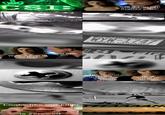Zoom and Enhance
Confirmed 164,583
Part of a series on TV Tropes. [View Related Entries]
Zoom and Enhance
Part of a series on TV Tropes. [View Related Entries]
About
Zoom and Enhance, also referred to as Let's Enhance, refers to a film and television trope where a crime-solving character orders a technician to zoom and enhance a pixellated or artefacted video still or surveillance photograph, causing an evidentiary detail in a photograph to become clearer. When this trope began, this technology did not exist, causing these television sequences to be frequently parodied.
Origin
It is unknown what film or television show first featured the ability for computers to zoom and enhance a photograph or video. An early example of improbably blowing up a photo from film negative occurred in the 1948 film Call Northside 777 (below left). Realistic film enhancement situations, where the exposures get blurrier as they are enlarged, have formed the plots of several films, most notably the 1966 thriller Blow-Up. However, one of the earliest known examples of computer involvement, as well as the first to use the term "enhance", is from the 1982 Ridley Scott science fiction film Blade Runner (below right). In the famous scene, Deckard (Harrison Ford), repeatedly asks a computer to zoom and enhance a photograph.[1] At the end of the scene, he tells the computer to "give him a hard copy" of the enhanced image. Since this film is supposed to take place in a fictional Los Angeles in the year 2019, in 1982 this usage of the technique was not perceived as immediately ridiculous.
Spread
In the late 1990s and early 2000s, technology-based crime-solving techniques became popular on a variety of television shows, most notably CSI and CSI:Miami, both of which often used zoom and enhance technology on photographs that would actually not have been decipherable by that method, like fuzzy stills from surveillance cameras or pixellated and distant photos. On July 7th, 2009, YouTuber tempura1234 posted a video clip, titled "Why I Don't Watch CSI," taken from an episode of CSI:NY where Mac Taylor(Gary Sinise), is able to see a corneal reflection of a criminal by zooming and enhancing a blurry surveillance video still. The video gained 1.2 million views as of July 2015. In December 2009, film editor Duncan Robson gathered enough scenes to create a supercut of zoom and enhance scenes from a variety of television and film sources (below right). The supercut was a popular hit, gaining 2.6 million views as of July 2015. In 2013 the supercut was shown in exhibition at New York City's Museum of the Moving Image.
After these two videos were posted, parodies spread throughout television and online. Notable TV shows that have parodied zoom and enhance include Futurama, Community, and Red Dwarf.
Corneal Image Extraction
In 2013, scientists Rob Jenkins and Christie Kerr were able to zoom in on the eyes in photographs of subjects taken in high resolution and extract reflective images from the corneas of the subjects. The pair wrote in their paper on the experiment "In a test of spontaneous recognition (Experiment 2), observers could reliably name a familiar face from an eye reflection image. For crimes in which the victims are photographed, reflections in the eyes of the photographic subject could help to identify perpetrators." In essence, they believed that photographic technology has now advanced to the point that some of the techniques ridiculed in "zoom and enhance" were now possible.[3]
Various Examples
Search Interest
External References
[1] Expert Reviews – Top things Hollywood thinks that computers can do
[2] TvTropes – EnhanceButton
[3] Plos – Identifiable Images of Bystanders Extracted from Corneal Reflections
Recent Videos 18 total
Recent Images 7 total
Share Pin
















Comments ( 23 )
Sorry, but you must activate your account to post a comment.
Please check your email for your activation code.